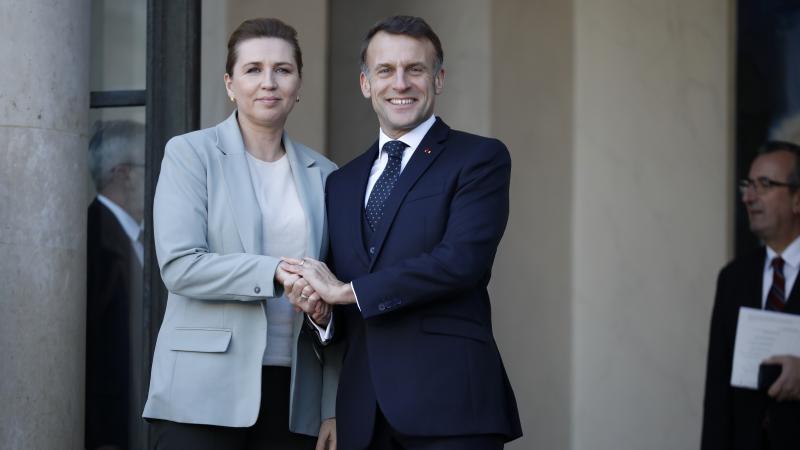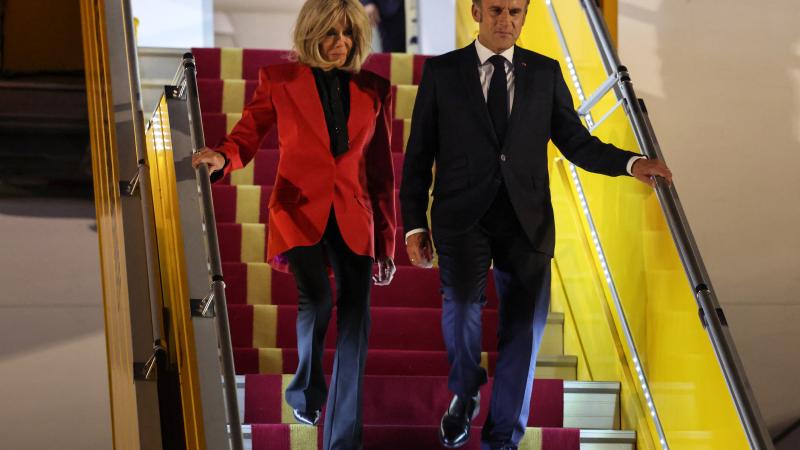The crypto option: Russian workaround to mitigate Western sanctions, or digital mirage?
Individuals, and possibly small companies, could use Bitcoin or other commercial cryptocurrencies to get around sanctions, but it's very unlikely there would be enough scale to save the Russian economy.
After the 2014 Russian invasion of Ukraine, the U.S. prohibited Americans from doing business with Russian banks and oil companies, inflicting an estimated $50 billion per year of damage on Russian firms. As a result of the 2022 Russian invasion of Ukraine, the U.S. and its allies are imposing even harsher sanctions.
President Biden announced Tuesday that he was banning energy imports from Russia, which made up 3% of all U.S. crude imports and 8% of all petroleum products. In 2021, this amounted to 209,000 barrels of crude per day and 500,000 BPD of other petroleum products. The U.K. then announced that they would also begin phasing out Russian oil. These steps will further darken the outlook for a Russian economy that was already feeling the pinch.
The ruble fell to a record low on Monday on news of an impending U.S. ban on Russian oil imports, trading at 38% lower for the year to date, after the central bank last week increased the benchmark interest rate to 20%. Russian commercial banks are offering tremendous interest rates, with leading private lender Alfa Bank offering 8% on 3-month dollar deposits as of last week..
Exchange Traded Funds (ETF) of Russian companies had dropped 72% in value since mid-February, as of March 2. The central bank is now urging companies to convert 80% of their foreign currency holdings into ruble, to prop up the currency. Russian sovereign debt is in danger of being downgraded, and several key banks have been removed from the SWIFT.
One way that Russia may be able to mitigate the impact of sanctions, is through the use of cryptocurrency. The sanctions prevent sanctioned entities from transferring money through banks. Crypto could make it possible to transfer millions of dollars of unregistered cash between parties, a technique which has already been employed by North Korea and Iran. Under normal circumstances, cryptocurrency transactions are recorded on blockchain, but Russians have developed masking devices, to make the transactions harder for U.S. and international law enforcement to trace.
Several cryptocurrency options are open to Russians. The first is the digital ruble which is expected to be launched later this year. Another is mining for coins, as Russia is already the world's third-largest miner of Bitcoin. Hacking could be a means of stealing cryptocurrency. One more Russian specialty is ransomware, which could be used to demand payments in digital currency. In 2021, roughly 74% of global revenue from ransomware, more than $400 million worth of cryptocurrency, went to Russian-affiliated entities.
Since the invasion, ruble purchases of cryptocurrency have been at the highest level in history. But while individuals, and possibly small companies, could use Bitcoin or other commercial cryptocurrencies to get around the sanctions, it is very unlikely that there would be enough scale to save the Russian economy.
Russia's GDP is around $1.5 trillion dollars, about 46% of which comes from trade. Energy accounts for more than half of that number. This means that Russia needs to move tens or even hundreds of billions of dollars per day to settle its imports and exports. Currently, the liquidity of cryptocurrencies is extremely low. Even Bitcoin, the most well-known coin, has a low max, with the bitcoin-ruble pair maxing out at $200,000. So, while cryptocurrencies may be adopted within Russia and Ukraine to pay for locally purchased goods, the sheer volume of payments needed to maintain the country's external trade makes cryptocurrency a spotty solution at best.
Another potential option for bypassing the sanctions would be for Russia to use China's digital yuan, or e-CNY, a form of central-bank digital-currency (CBDC), which works through a mobile app on Android and Apple. Largely intended for domestic commerce, the currency could theoretically be used for cross-border payments, but the e-CNY was only launched in January, so it is still restricted to certain users, such as domestic banks. Additionally, the means by which it could be used internationally is extremely cumbersome.
The e-CNY is not yet supported by major coin exchanges. Consequently, it must be traded on unregistered exchanges, where it can be used to purchase other, more widely-accepted cryptocurrencies. If Russians wanted to use e-CNY to pay for products ordered from abroad, they would first have to buy a more popular coin, then purchase e-CNY. And while this method avoids the international banking system, it does not provide a solution for a greatly-depreciated ruble. While the ruble is sinking, the yuan is rising, hitting 6.3 against the dollar, a high not seen since 2018. Russians would be purchasing expensive yuan with cheap rubles.
Chinese buyers using the e-CNY to pay for Russian exports, would face yet another obstacle. As a result of strict cryptocurrency regulations inside of China, it may be nearly impossible for a Chinese holder of e-CNY to buy other coins. Therefore, in order to send money to a Russian supplier, a Chinese importer would have to first send the e-CNY to a trusted intermediary, outside of China, who would then exchange the e-CNY, on an unregulated exchange, for a more tradable coin, which would be forwarded to the supplier in Russia.
In spite of there being no perfect solutions, crypto is playing a role on both sides of the conflict. The Ukrainian government is soliciting donations in cryptocurrency and had raised more than $56 million as of Friday. Some Ukrainians purchased crypto before fleeing their homes, and hope to convert it to paper currency, once they arrive in a safe country. Banks are limiting withdrawals, so some Ukrainians are using crypto as a workaround for domestic purchases. There are limitations, however, as an internet connection is necessary. And the wallet would most likely need to have been set up and the currency purchased before the crisis started. If an individual's bank accounts are frozen or online payment systems are not working, it may be impossible to purchase cryptocurrency. And of course, Ukrainian currency, the hryvnia, had hit a seven-year low as a result of the crisis even before the Russian invasion.
Ukraine has requested that crypto exchanges block Russian users. So far, Biance, the largest exchange in the world, has rejected a blanket freeze on Russian clients. Kraken, another major cryptocurrency exchange, has similarly declined. Biance did, however, confirm that they would block Russian users who have been sanctioned. Meanwhile the industry is so new, and regulations so vague, it is unclear if a cryptocurrency exchange would be obligated to comply with sanctions.
Regardless of which crypto option winds up playing the largest role in this conflict, the Russian invasion of Ukraine is being called "the first crypto war," and the prediction is that cryptocurrency will become a permanent feature of future conflicts. The Biden administration is developing a "focused tactical strategy" to ensure that Russia cannot use cryptocurrencies to bypass U.S. sanctions. Moving forward, a country's ability to control cryptocurrency will be one of the more important weapons in its national defense arsenal.
The Facts Inside Our Reporter's Notebook
Links
- estimated $50 billion
- 38% lower for the year to date
- dropped 72%
- North Korea
- which is expected
- third-largest
- demand payments
- $400 million
- cryptocurrency
- $1.5 trillion
- 46%
- of that number
- bitcoin-ruble
- digital yuan
- major coin exchanges
- hitting 6.3
- trusted intermediary
- soliciting donations
- raised more than $56 million
- seven-year low
- largest exchange
- obligated to comply
- crypto war
- tactical strategy
















